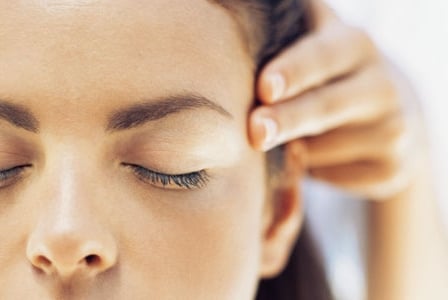
Having suffered from migraines since the age of 10, I shudder when I think back to the intensity and severity of migraine episodes. Hiding from sunlight and spending time in the washroom during bouts of nausea are all too memorable.
Having suffered from migraines since the age of 10, I shudder when I think back to the intensity and severity of migraine episodes. Hiding from sunlight and spending time in the washroom during bouts of nausea are all too memorable.
Research has uncovered many natural remedies that can help prevent the onset of migraines. These remedies can help decrease the frequency and severity of migraines and help migraineurs—people who suffer from migraines—regain control of the debilitating episodes.
Natural means of migraine prevention can help diminish frequency and intensity of migraine episodes and may be a solution for many sufferers of this intense type of headache. While more research is needed to uncover additional treatment options, natural therapies provide a safe and alternative method to migraine relief.
Herbal remedies, natural supplements, along with acupuncture and massage therapy have all shown therapeutic promise for individuals wanting to step out from migraine darkness into the light of relief.
Feverfew
The herb feverfew (Tanacetum parthenium) has come under focus for its potential ability to reduce migraine symptoms. The herb became especially popular in England in the 1980s as an alternative to conventional drugs for migraines.
Several studies have evaluated the effectiveness of feverfew for the prevention and treatment of migraines. For example, one study examined the use of a feverfew extract or a placebo in 170 people with migraines. Migraine frequency decreased from 4.76 to 1.9 attacks per month with feverfew as compared to the placebo, which decreased by 1.3 migraines per month.
Although more research is needed to look at the efficacy of feverfew in migraine prevention, an overview of currently existing studies seems to favour feverfew over placebo.
5-HTP
A compound produced in the body from the amino acid tryptophan, 5-HTP (5-Hydroxytryptophan) has also shown promise in migraine prevention. Used in the body to make the neurotransmitter serotonin, 5-HTP is now available in supplement form derived from the seeds of an African plant, called Griffonia simplicifolia. Since supplements that affect levels of serotonin may provide migraine relief, 5-HTP has been explored as a therapeutic alternative.
Research indicates that 5-HTP may prevent migraines and reduce the frequency and severity of migraines. In one study 124 people were given 5-HTP (600 mg per day) or the drug methysergide, a prescription medication for migraine prophylaxis. After six months 5-HTP was found to be as effective as methysergide in reducing the severity and duration of migraines.
Another study looked at 5-HTP or the drug propranolol for four months. Both treatments resulted in a statistically significant reduction in the frequency of migraines. Although the propranolol group fared better, with a reduction in the duration of episodes, 5-HTP still provided positive results and can be considered a viable treatment option for migraineurs.
Magnesium
Our bodies need magnesium for more than 300 biochemical reactions, such as normal muscle and nerve function, heart rhythm, immune function, blood pressure, and bone health.
Several studies have evaluated the effectiveness of magnesium for migraine and have shown promising results. In one study, oral magnesium (600 mg per day) or a placebo were given to 81 people with migraines. After nine weeks, the frequency of migraines was reduced by 41.6 percent in the group taking magnesium, compared to only 15.8 percent in the group taking the placebo.
Butterbur
Several studies suggest that butterbur (Petasites hybridus) helps to prevent migraines. The largest study involved 245 people with migraines who took either butterbur extract or a placebo. After four months of treatment, butterbur, 75 mg taken twice a day, was more effective than placebo for migraines.
According to the National Population Health Survey (NPHS), an estimated 8 percent of Canadians age 12 or older have received a clinical diagnosis of migraine. For the millions of migraine sufferers, the excruciating pain, sensitivity to light, and nausea that characterize these debilitating headaches need no introduction.
Along with pain, approximately 20 percent of people with migraines experience an aura which precedes the pain and consists of flashing lights, brilliant stars, sparks, zigzagging patterns, and even blind spots.
A migraine may also be accompanied by other sensations, such as numbness or tingling in parts of the body and speech problems. So severe, head pain can keep migraineurs regularly away from school and work.
Migraine sufferers can make simple lifestyle changes to help reduce the likelihood of an attack. Here are three straightforward guidelines for beating the pain:
- Make sure you’re getting enough sleep. Research shows that sleep deprivation can act as a migraine trigger. While everyone’s needs are different, experts recommend about seven hours a night for most healthy adults.
- Stay well hydrated. Don’t wait to feel thirsty before you drink—by then you’re already dehydrated and a migraine could occur. Try to consume about 2 litres of water spaced throughout each day.
- Get some therapy. Acupuncture, biofeedback, massage, and relaxation therapy have all been shown to help sufferers deal with their headache symptoms.

